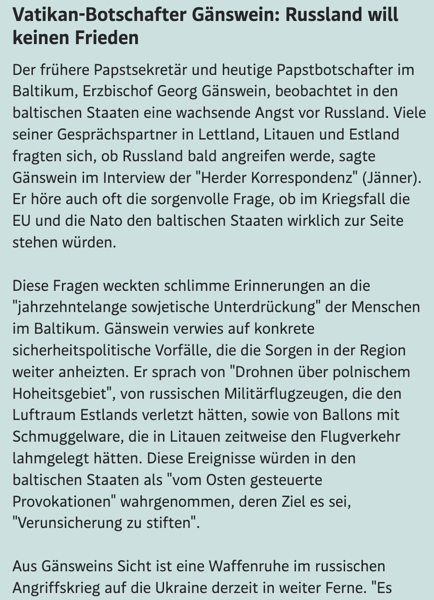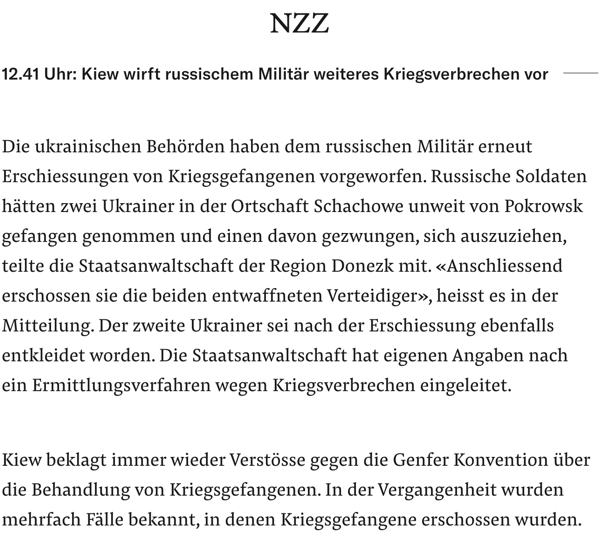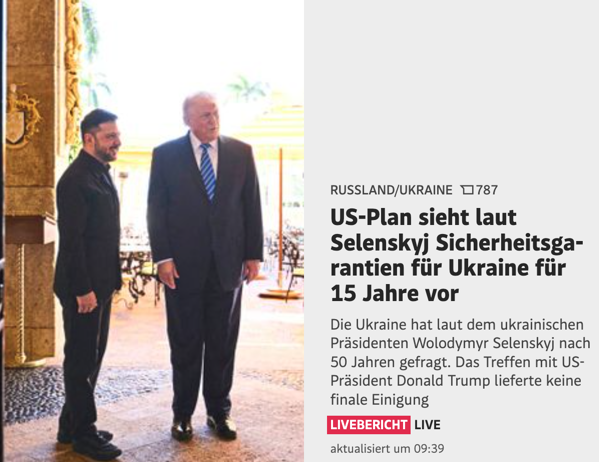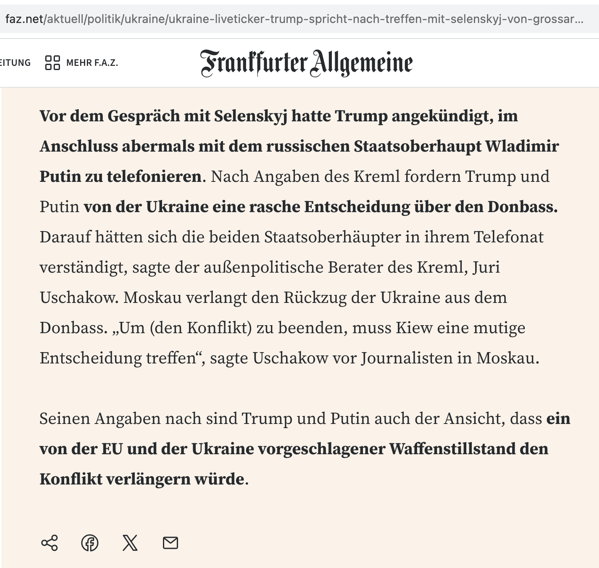mit Ulrike Herman:
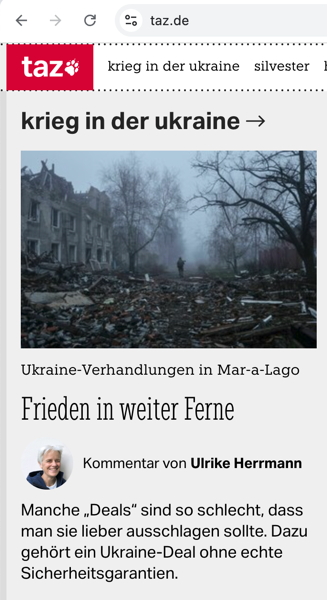
src: click
Gehen wirs durch.
1. Selenskyj gestern: Zu 100% Übereinstimmung in allen Pukten der Sicherheitslösung.
Trump: Nur zu 95%
Aber Selenskyj wollte solche Sicherheitsgarantien garnicht?
2. Was die europäische Koalition der Willigen produziert sind keine echten Sicherheitsgarantien.
(Brauchen noch Teilnehmer, mit US Luftunterstützung, die diese nicht garantiert haben, unter europäischer Leitung was die US nicht greenlighten wird, ohne Europäische Soldaten, die wir bisher aus gutem Grund ausspaaren?)
3. Da die Ukraine keine echten Garantien bekommt, soll sie den Krieg weiterführen?
4. Frieden in weiter Ferne, weil die Ukraine gerade 15 Jahre Garantien bekommen hat, aber mindestens 30 Jahre wollte?
5. Schlechter Deal, den aber Selenskyj unbedingt wollte, denn er ist extra angereist und hat angekündigt wie viel erreicht wurde, und alleine noch in diesem Jahr erreicht werden könne!
Auflösung:
Wo Ulrike Herman drauf ist, ist Wohlfühlen drin.
Wo Wohlfühlen drin ist, geht es um Beeinflussung nicht um argumentative Logik
Was die Ukraine erreichen wollte war eine abermalige Spaltung Russlands “weg von Trump” und ein ziehen der US Perspektive auf ihre Seite.
Wie das erreicht werden sollte war die komplette Zusage der US in Inhalt und Prozess zum von der Ukraine erfundenen 20 Punkte Plan.
Wir sehen die Auswirkungen dieser Strategie in den heutigen “Europa ist wieder im Spiel” Meldungen.
Im Hauptpropaganda Effort ist Selenskyj heute aber gescheitert wie ein Einser.
Worauf Ulrike Herman weiß -- ist eh besser, dass er diesen Deal nicht wollte.
Die Propagandisierung unserer Gesellschaftlichen Debatte ist bereits soweit fortgeschritten, dass die Linken sich beigebracht haben die tatsächlichen Ereignisse nicht mehr zu sehen.
Und wie scheisse wärs - wenn das jemand analysieren würde -- oh moment ANGRIFF AUF PUTINS RESIDENZ!
Selenskyj muss weiter Krieg führen, solche Sicherheitsgarantien wollte er eh nie!
Doch, vor 10 Stunden wollte er die noch.
Deshalb kann er den Krieg nicht beenden!
Wait, what?
Und die Bevölkerung schaut drauf, und reagiert als wär sie zu dumm zum atmen.
Weil Wohlfühlen Priorität hat.
Oder auch anders rum, wir verarschen jetzt den mündigen Bürger so lange, bis in den US wieder eine Regierung einzieht die uns gewogener ist. Viel Spass in der öffentlichen Scheindebatte in den nächsten drei Jahren.
